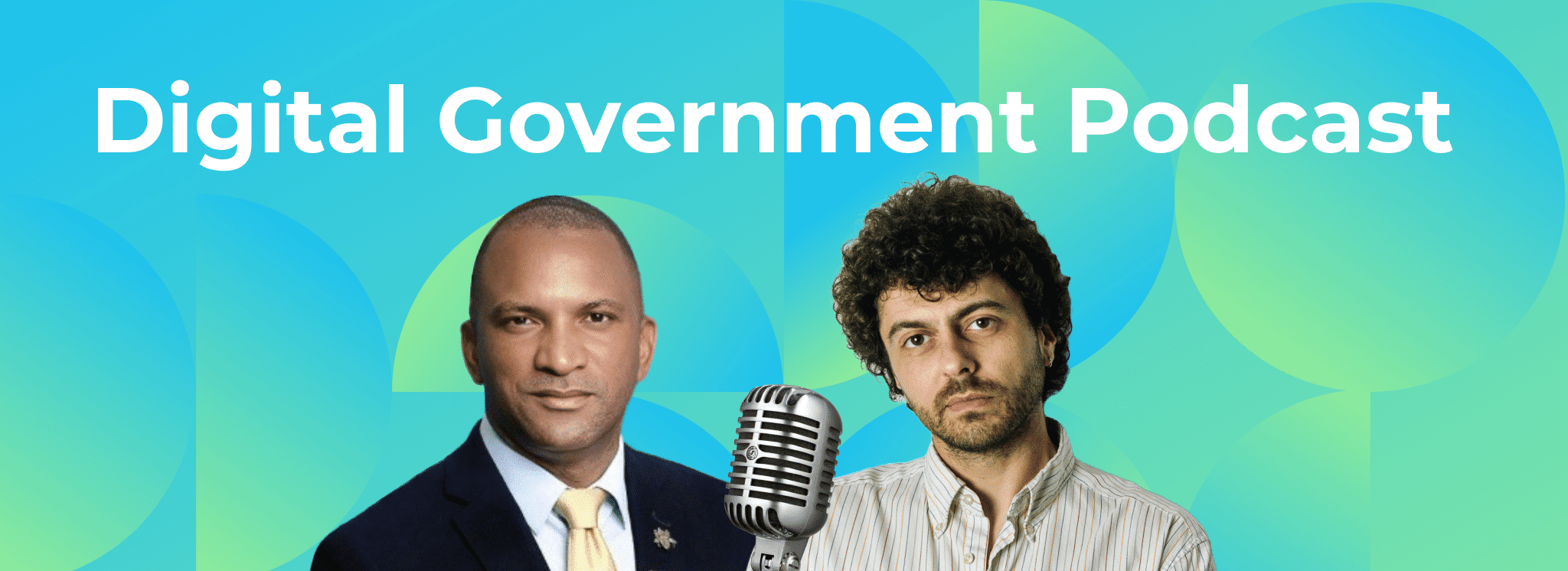
Podcast 🎧 & blog: Turks and Caicos have big plans on digitalisation
Can a group of Caribbean islands become the Estonia of the region, looked up to on digital transformation and service delivery? E. Jay Saunders thinks so – for both citizens and businesses. He is the former Deputy Premier and Minister of Finance, Investment, and Trade of the Turks and Caicos Islands. And at the 10th e-Governance Conference, by all rights took part in a panel on enlightened digital leadership.
In this Podcast episode, Saunders takes us through what digitalisation means for small countries in the area. Between breaking down barriers to better access digital markets, and providing citizens with a 24/7 experience of government that has nothing to envy from what they see in countries – on paper and volume of state revenue – with larger availability of resources and capital.
Digitalisation in the Turks and Caicos Islands – the context
The Turks and Caicos Islands have unique position, in terms of example to look at. Their proximity to the United States, and the influence of American digital trends, shape local expectations.
“Our people see what happens in the United States. And they want the same thing, particularly when it comes to digital services and mobile apps. They want exactly the same. And so it has become a quality-of-life issue, in the sense that they want to buy things on Amazon, they want to be able to access streaming services like Netflix, they want the same catalog of content, they want to consume information, they want the same data they do in North America,” Saunders begins with.
Digitalisation in the Turks and Caicos is about meeting these expectations, providing quality internet services, and ensuring that citizens can enjoy the same digital experiences as those in North America and Europe. This vision aligns with the broader goal of creating a digital environment that supports quality of life improvements, making it easier for citizens to access services, stream content, and engage in online activities seamlessly.
A lot has been achieved already in the Caribbeans
Reflecting on his tenure as Minister, he was tasked with setting the digitalisation vision for the government. Here, Saunders draws fitting parallels between the adoption of electricity and digitalisation – framing it as a basic necessity that should be universally accessible.
“Our goal was to start with the National ID and try to create a country that did for digitisation in the Caribbean what Estonia did for digitalisation in Europe. We wanted to be the new Estonia, and we want to be the Estonia of the Caribbean. So when people look at us, they can say the Turks and Caicos Islands became a powerhouse in this field,” he says.
The ultimate goal was to establish a 24/7 government, ensuring that citizens could interact with government services at any time. “We don’t have 24/7 government. What I mean by that, is that your interaction with government happens at a fixed time between 10am, and probably 4pm. My goal and my vision is to ensure that government is available to the citizens 24/7, based on instant requests and satisfying needs of the moment,” Saunders explains.
Breaking down all barriers to better service delivery
But to do so, it is essential to break down those barriers that hinder citizens from accessing services at any given time, and businesses from reaping the benefits of full participation in digital markets.
On the one hand, public-private partnerships already contributed to making connectivity ubiquitous. “Collaboration between the government and private sector helped achieve 100% data coverage, enabling citizens to access internet services regardless of their location. Our mobile carriers were able to follow the government standard and vision to get it to 100% of the population,” Saunders notes.
On the other hand, the focus lies on interoperability and adopting global best practices. “We want to follow international best practices and be able to integrate with the wider community as quickly as possible. But we don’t want to be a copy-paste government; we want to become leaders in this field. We want our people to have a seat at the table to say, the content and the technology we are consuming should fit us,” he highlights.
In fact, international best practices can’t be adopted as a one-size-fits-all solution. They become all the more useful when local communities, and working cultures, contribute to shape them. Or, at least, put them to work in a tailored manner to the needs and practices of different contexts. In that sense, Saunders’ aspiration for Turks and Caicos is to contribute to the development of these standards too, eventually.
The role of AI, and future plans at large
Addressing the current tech trend of artificial intelligence (AI), Saunders believes in its potential to revolutionize digital transformation in the Turks and Caicos Islands. He acknowledges the environmental concerns associated with AI, but stresses its transformative potential. “This is the first day in a brand new race. Now we have a brand new technology that small island nations like the Turks and Caicos can use to power us into becoming one of the foremost people in our region,” Saunders states.
He envisions using AI to enhance government services, making them more accessible and efficient. “Our goal is to use AI to make the interaction with government as if you’re dealing with a person face-to-face.” By integrating AI with government operations, Saunders aims to provide citizens with seamless interactions through familiar platforms like social media. An example? The use of chatbots to facilitate communication between citizens and the government, ensuring that services are available 24/7.
Looking ahead, integrating AI in service delivery fits perfectly with two further key priorities for the next three to five years. The National ID initiative is another critical project, in order to address immigration challenges and improve service delivery. But the overarching goal remains “digitising government services to make them available around the clock. We want to increase citizens’ participation in government using the tools they are familiar with.” As proactive as a digital government could be.
















